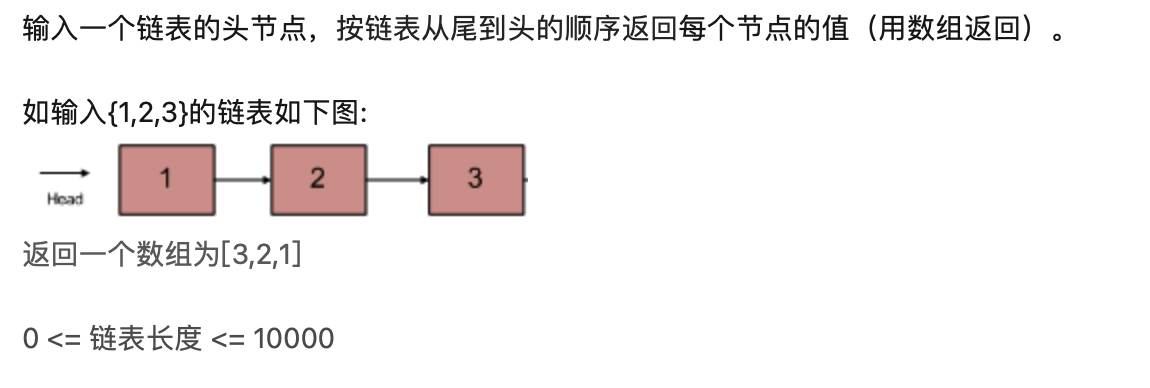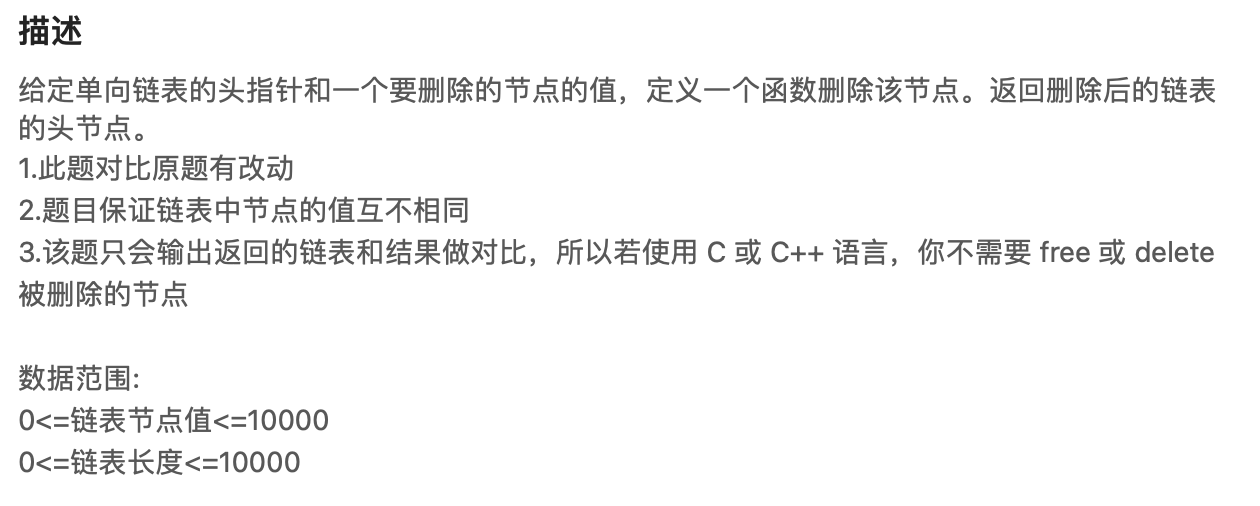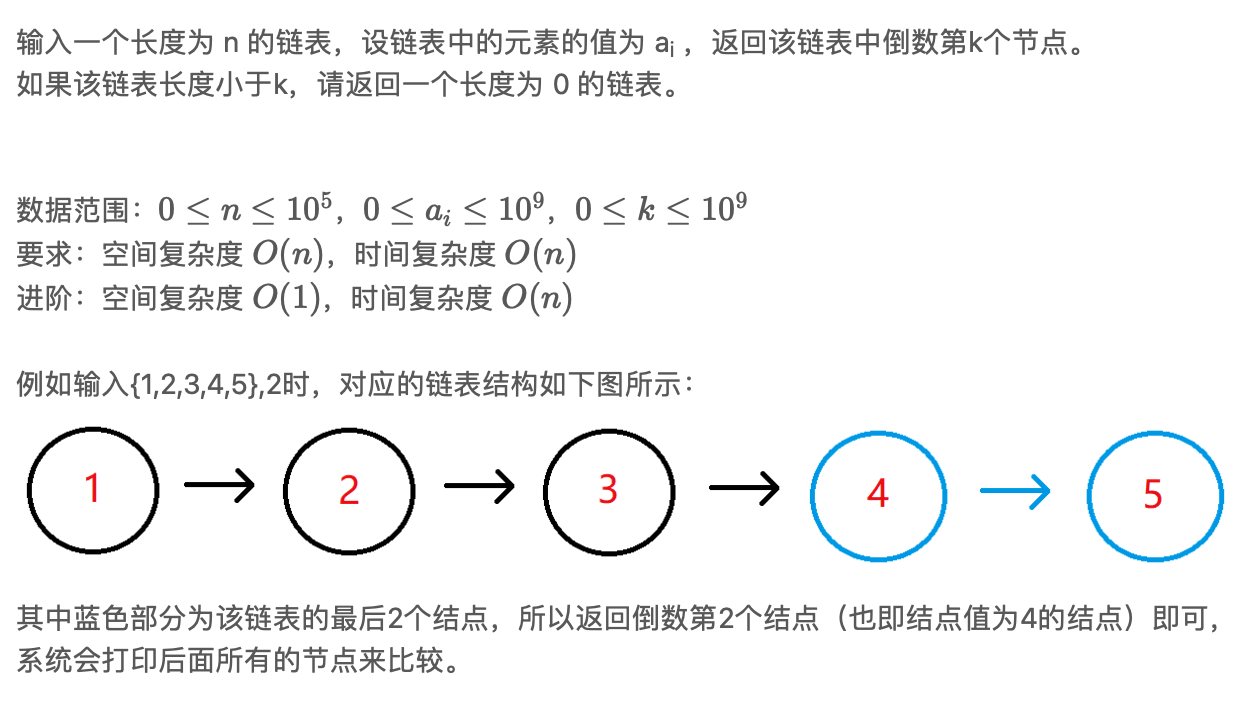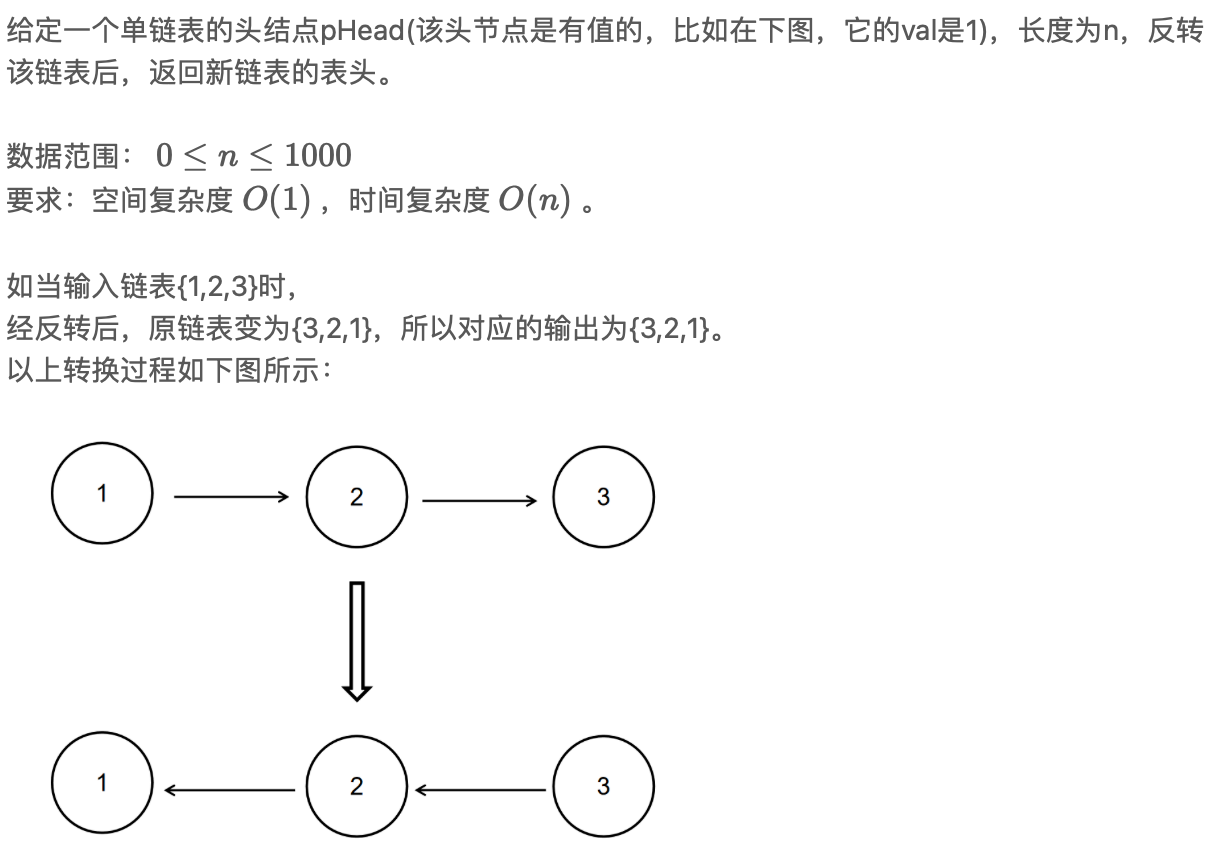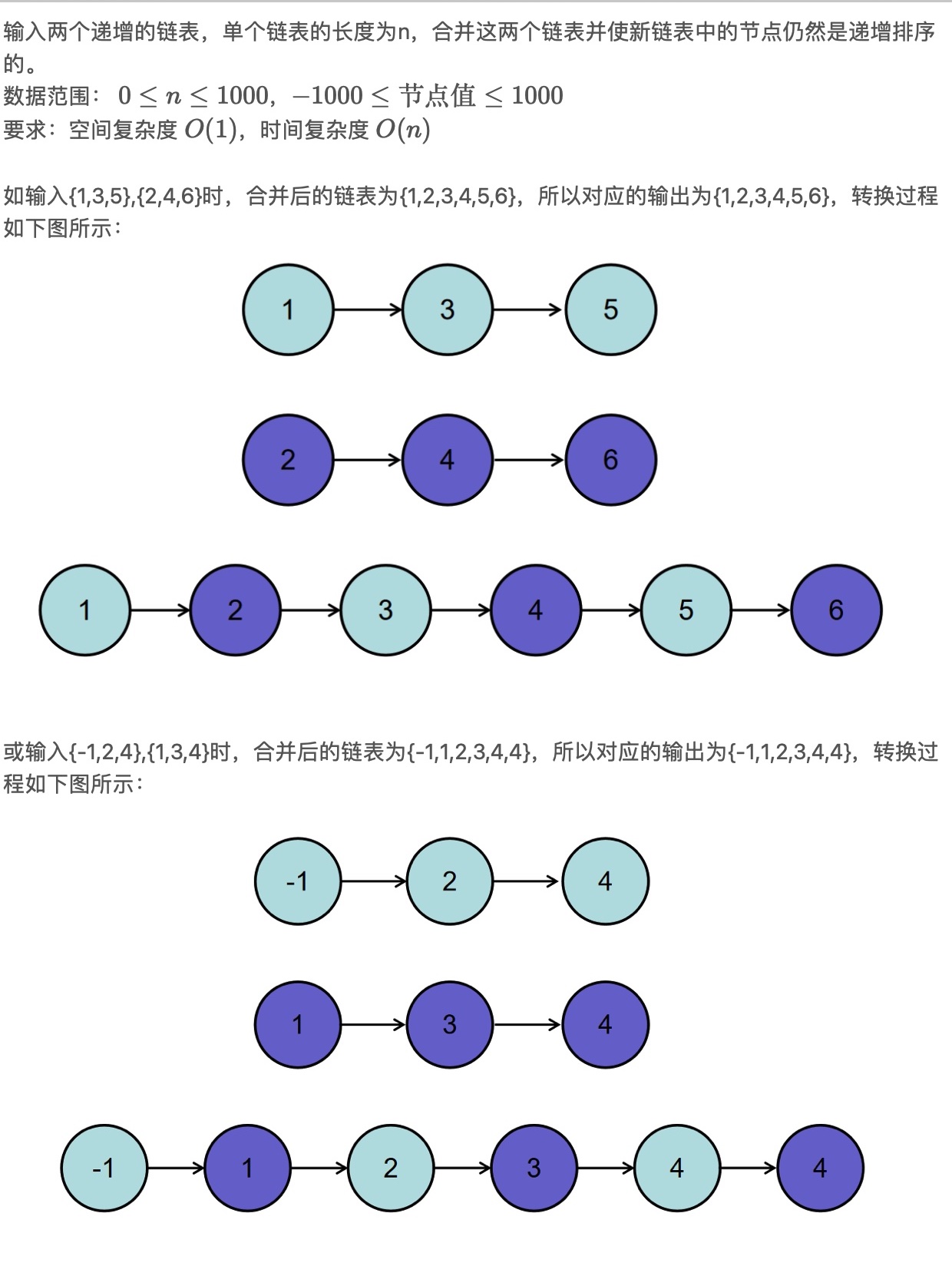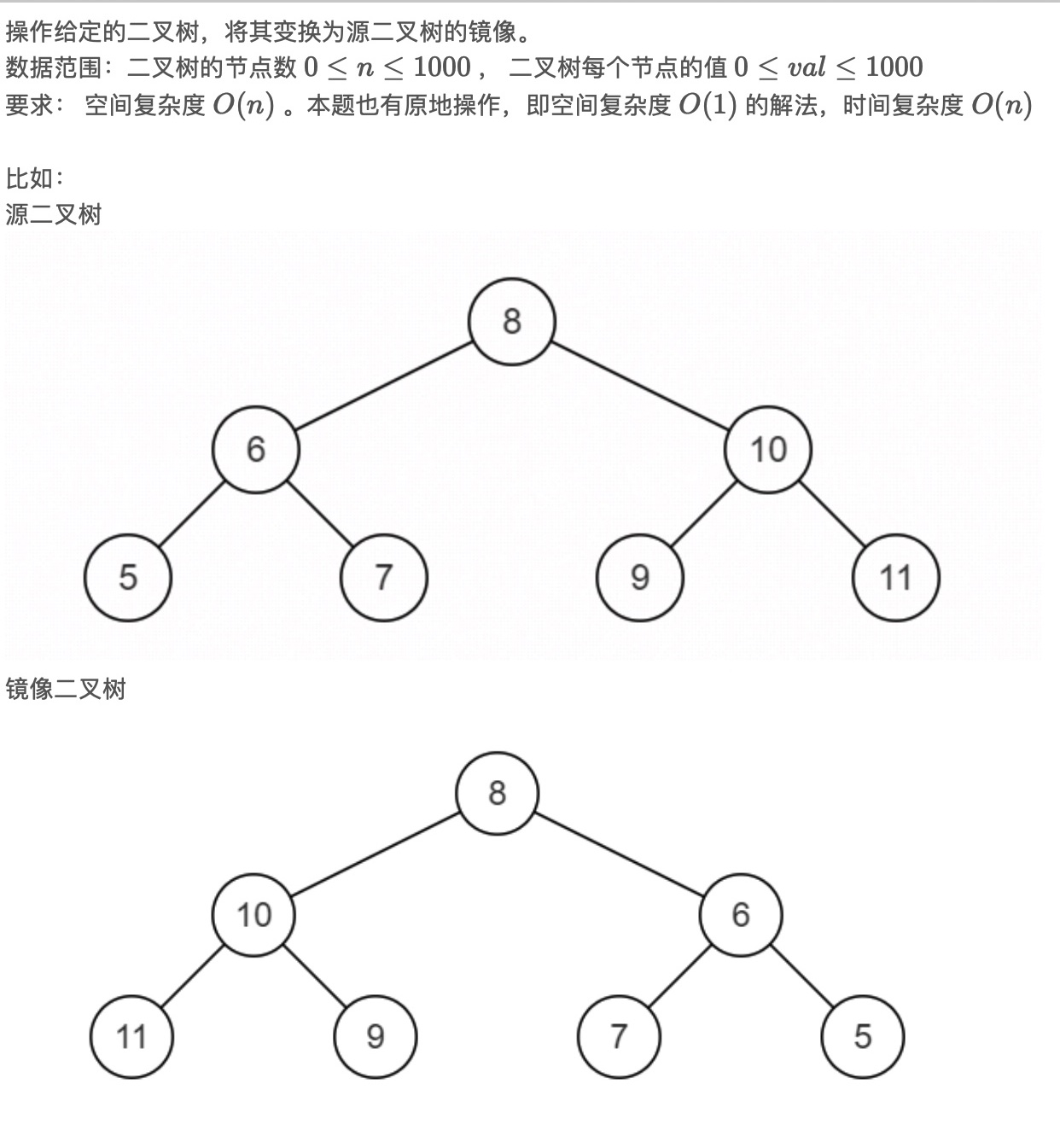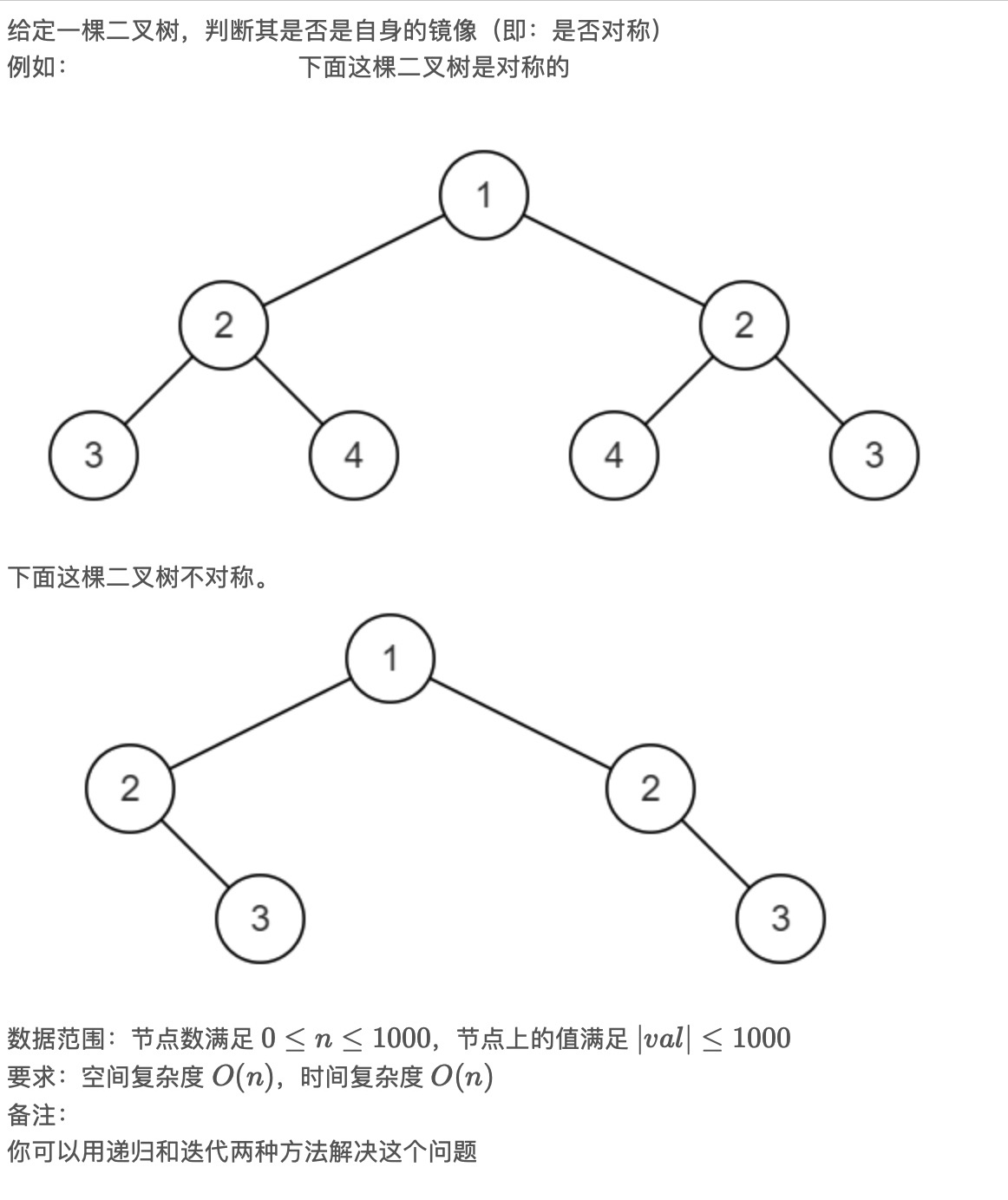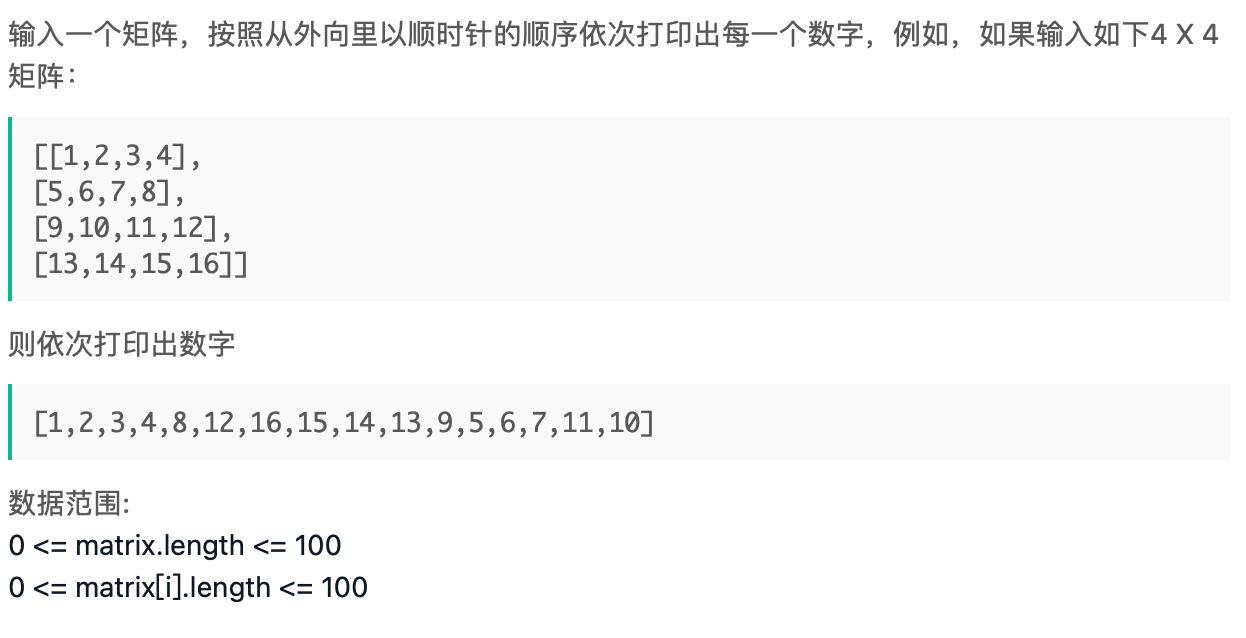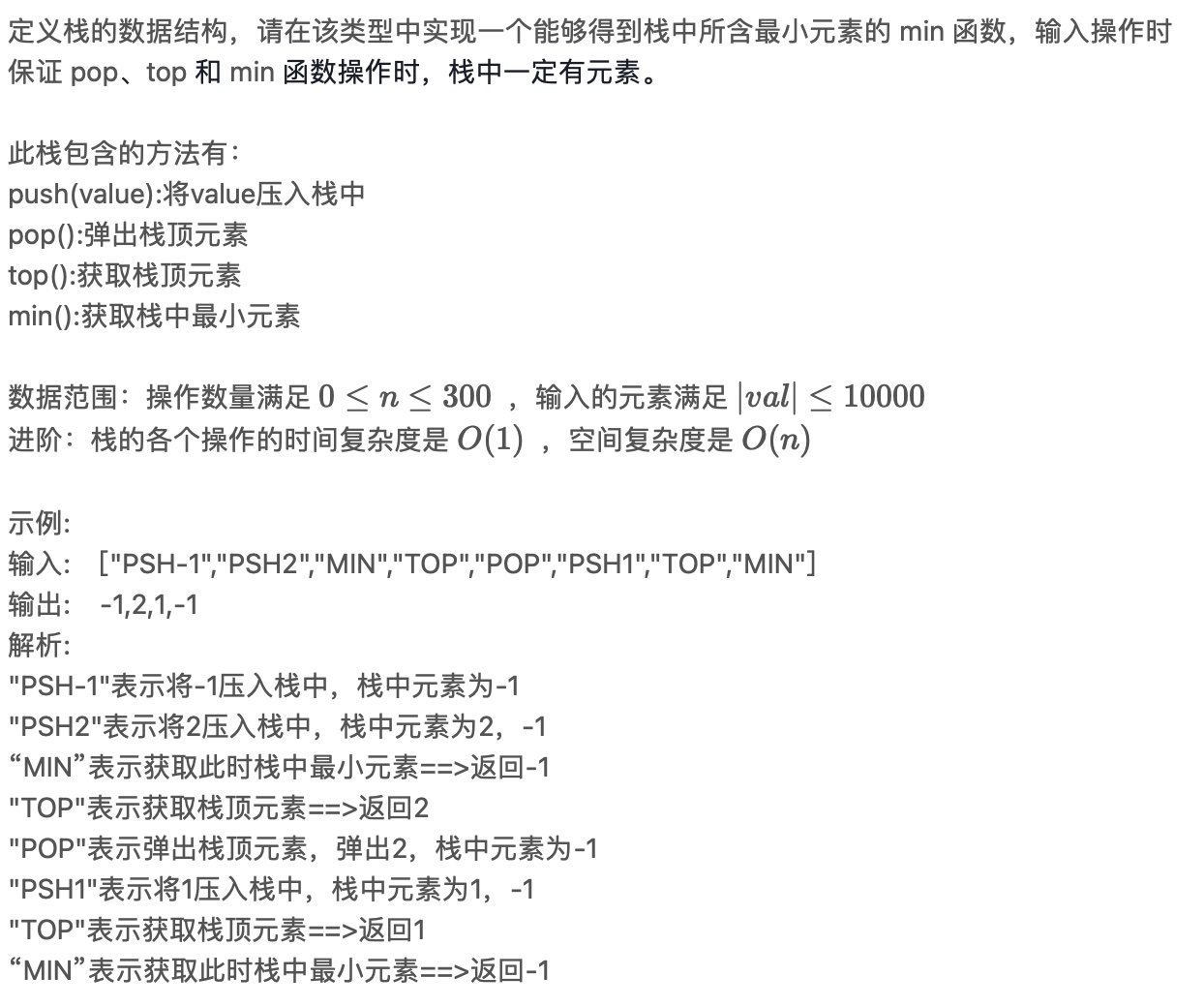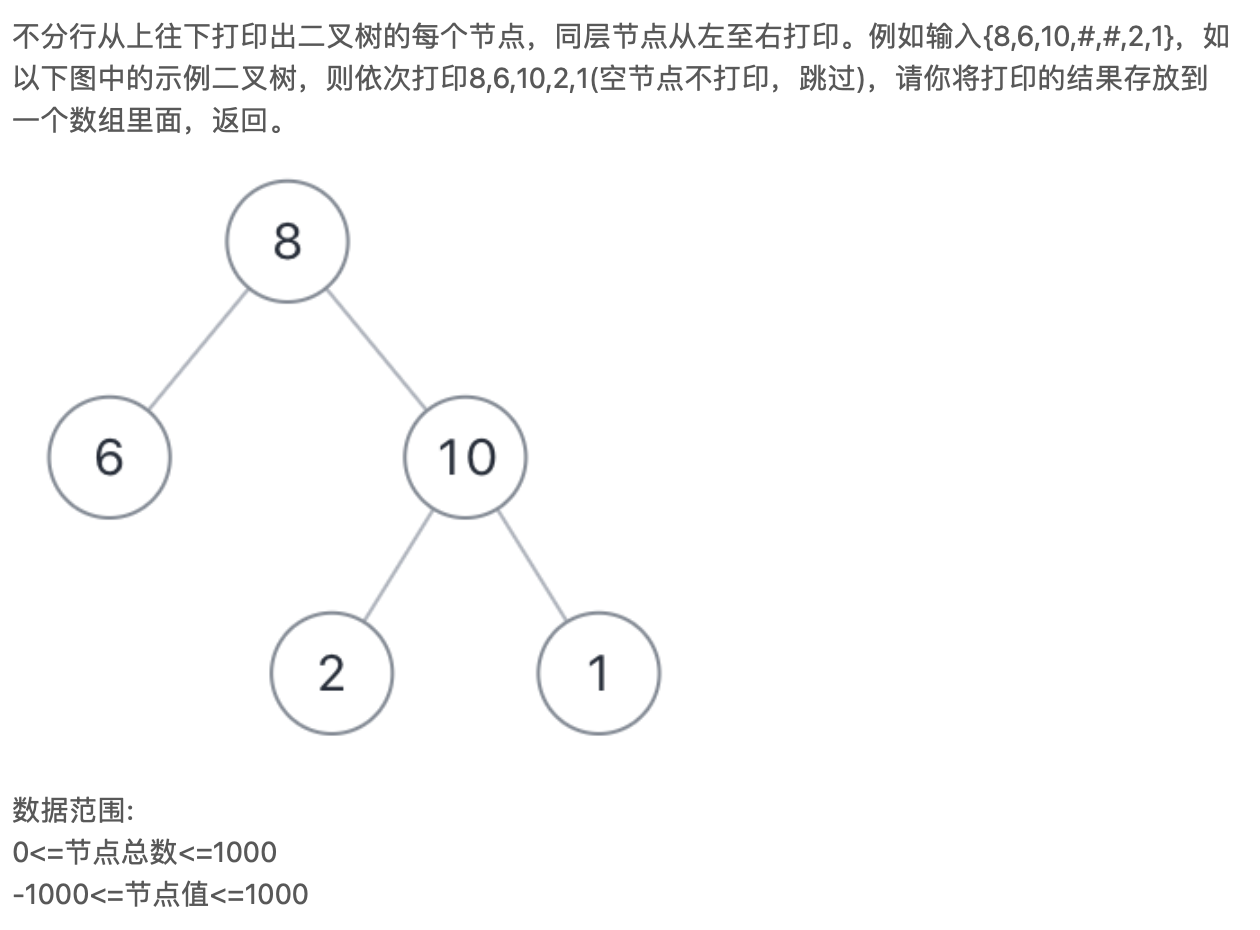剑指Offer-个人题解

目录
剑指Offer
简单
斐波那契数列
描述
输入描述:
一个正整数n
返回值描述:
输出一个正整数。
示例1
|
|
示例2
|
|
示例3
|
|
代码实现
|
|
数组中重复的数字
描述
示例1
|
|
代码实现
|
|
替换空格
描述
示例1
|
|
示例2
|
|
代码实现
|
|
从尾到头打印链表
描述
示例1
|
|
示例2
|
|
代码实现
|
|
用两个栈实现队列
描述
示例1
|
|
代码实现
|
|
旋转数组的最小数字
描述
示例1
|
|
示例2
|
|
代码实现
|
|
二进制中1的个数
描述
示例1
|
|
示例2
|
|
代码实现
|
|
打印从1到最大的n位数
描述
示例1
|
|
代码实现
|
|
删除链表的节点
描述
示例1
|
|
示例2
|
|
代码实现
|
|
链表中倒数最后k个结点
描述
示例1
|
|
示例2
|
|
代码实现
|
|
反转链表
描述
示例1
|
|
示例2
|
|
代码实现
|
|
合并两个排序的链表
描述
示例1
|
|
示例2
|
|
示例3
|
|
代码实现
|
|
二叉树的镜像
描述
示例1
|
|
示例2
|
|
代码实现
|
|
对称的二叉树
描述
示例1
|
|
示例2
|
|
代码实现
|
|
顺时针打印矩阵
描述
示例1
|
|
示例2
|
|
代码实现
|
|
包含min函数的栈
描述
示例1
|
|
示例2
|
|
代码实现
|
|
从上往下打印二叉树
描述
示例1
|
|
示例2
|
|
代码实现
|
|
数组中出现次数超过一半的数字
描述
示例1
|
|
示例2
|
|
示例3
|
|
代码实现
|
|
连续子数组的最大和
描述
示例1
|
|
示例2
|
|
示例3
|
|
代码实现
|
|
未完待续···



